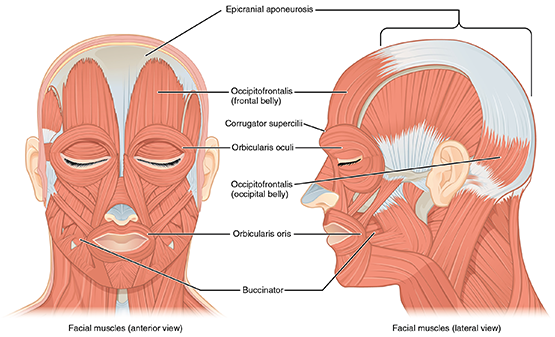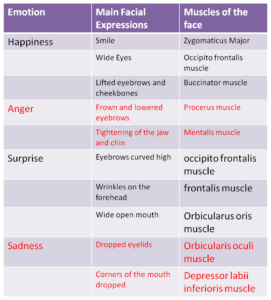
Because it was highly recommended by another Yoga Tune Up® teacher, I listened to speaker Julian Treasure give a ten minute talk on TED titled How to Speak So That Others Will Listen. Of course this is something I would like: to talk and have people listen. Doesn’t everyone? So, I tuned in with intrigue. About three-quarters of the way into his talk Julian Treasure gives his audience various ways to warm up their voices. He suggests doing these exercises before an important message is to be given. Pretending that I was sitting there in the front row, I followed along like a schoolgirl. Exercise #1: nailed it. Exercise #2: check. (Piece of cake. I can do these.) Exercise #3: epic fail. (Um, wait, what? Show me again Julian. Pause; rewind; repeat.) To my amazement, I could not do it. Exercise #3 seemed simple enough: pucker and press the lips together (a combination of a kiss and a pout), forcing air and a hum to pass through the lips as the lips waddle, or flap up and down, like you’re blowing bubbles in the bathtub and humming at the same time. It’s the same thing a small child would do while making a chug boat sound. I was dumbfounded. I could not do it.
Once the talk was over, I questioned every family member in the house, and even some on the phone. They all could do the movement – no problem, and they were perplexed that I could not. “You’re trying too hard.” “Relax your lips.” And so the suggestions went. I knew that I used to be able to do this lip movement since I used to zerbert the bare bellies of my children when they were little. (A zerbert is when you press your lips against their belly and blow, making farting sounds and eliciting giggles from the receiver.) No matter how hard I tried, I still couldn’t do it. Since I was stumped as to which muscles around my mouth weren’t firing, I turned to my faithful anatomy book.
According to The Trail Guide to The Body, the facial muscles can be divided into four groups: muscles of the mouth, nose, eyes, and scalp. I had always heard that frowning required more muscles (up to 20) than smiling (8), but I had no idea that the head is home to 30 muscles. The mouth alone contains 11 mimetic muscles, meaning they form expressions of and around the mouth. Since all these muscles are bilateral (meaning both sides) on the face except one, they create an astounding sum total of 23 expressions of the mouth!
Determined to get to the bottom of my zerbert dysfunction, I tested these 11 muscles, using my anatomy book as a reference while standing in front of the bathroom mirror. I palpated and massaged each muscle. Then I contracted and relaxed them. You can try this too. Using this chart, stand in front of a mirror to engage the muscles for each expression:
To try some moves specific to the mouth only do these:
- Pull down both corners of your mouth to make an inverted clown smile. This engages the depressor anguli oris muscle. Is your upside down smile symmetrical? Now trying doing one side at a time.
- Do your snarl-like upper lip curl, you know Elvis style. Try one side and then the other. Now do both. This movement activates your levator labii superioris which elevates and protrudes the upper lip.
- Make your best pouty lips, protruding the lower lip and dimpling the chin. You have just turned on your mentalis muscle which is located to the right and left of midline of the chin.
Although I did fairly well engaging these muscles separately and together, I did find a few blind spots – areas that were more challenging to propriocept or engage than others. For example, I can do a really good Elvis lip impression on the right side of my mouth, but not so good on my left. It’s not uncommon for this to happen. Muscles that are underused or sleepy can become more active with practice. Even the act of trying to engage the muscles is helpful. Something worth noting too is “when facial muscles are contracted involuntarily by emotion, they are more symmetrical, while deliberate or voluntary expressions often produce a more asymmetrical contraction.”
In the end, I decided it was much more complicated to administer a zerbert than engaging one muscle alone. It appears to take a combination of at least three, one of them being the orbicularis oris, which is notably the one mimetic muscle that is not bilateral. Join me next week as we dive a little bit deeper into this muscle that allows us to pucker up!













What an amazing article! I didn’t know the exact number of muscles that are involved in facial expressions and now I am not surprised why expressing your emotions is not always an easy task. I’ve seen people with partially paralyzed faces and it’s unbelievable how much effort they have to put to re-learn some “simple” muscle activations. Now I feel very motivated to do the exercises infront of the mirror!
My daughter and I have a fun game between us because she can EXPRESS the muscles of her face in so many nuanced and belly-laughing ways (the control she has with her eyebrows!) and she constantly challenges me to try to copy these expressions. I often find I am much more limited with my face muscle to mind connection but what I have also discovered is that I LOVE the work/play/frustration of trying! I think it puts me right into ventral vagal with my kiddo and I honestly feel more alive and open in my face after these silly moments. This article has me inspired to think about how YTU could be transposed into face – there are many wonderful releases with the balls and I’d love to explore some face tune up exercises to add to the mix. I appreciate that this article just inspired me to better learn and study these 30 face muscles and that it also led me to connect face movement with mood, energy and social connection.
I read the follow up article first – and this one is just as interesting! My husband just tried to teach me to “buzz” – purse lips as if to whistle, firm corners of the mouth, but leave the lips loose enough to force air through for a – you guessed it – buzzing sound. Brass players practice this free buzzing to improve their muscular strength and control. Apparently, I need a lot of practice!
Well, this makes me want to go to a mirror and do this facial workout! I forget to work these muscle groups, thank you forth reminder.
This is such a blind spot to my practice, very interesting read. Before YTU, I would avoid TMJ (temperomandibular joint) dysfunctions like the plague.. I felt like after physio school I wanted to forget the labs of putting on rubber hospital gloves and palpating muscles inside people’s mouths. Trust me, it was not a treat. Reading this and engaging in “The Roll Model” as we work through the final days of YTU training, really has left me feeling like I have new tools in my toolbox for things I have hated treating.. like TMJ! I guess I am now going to have to make it my personal mission to make everyones smiles as bright as mine with the YTU therapy balls.. challenge accepted!!
Great post! I had no idea how many muscles in our faces help us to communicate with the world. Trying to make my face do all of those things feels very weird but also very informative. Cluing into some major body body blind spots in my facial muscles.
This is really interesting! So rarely do we talk about the facial muscles. I loved the Ted Talk you linked as well!
I loved this chart of the muscles of emotion! I really like the idea of consciously trying to increase proprioception in the facial muscles. I’ve been reading a lot about Face Gym and after reading your article, I’m thinking that YTU gives us the tools to device a personalized one for ourselves.
Thank you for this tasteful article and the Ted talk video link. I probably shouldn’t have tried the exercises in a public place. People may thought that I am a little bit weird 🙂 I always like to learn and remember the muscles or places on our body that we use everyday without even noticing their functions. Every opportunity to learn how to propriocept or relax the muscles are so valuable to me. So, thank you again to sharing the way you have learned!
Great article! We all feel like fools trying to do it though 🙂 . (JK)
Now I want to go watch the ted talk and find out if I am doing the movements accurately! Thanks for sharing!
Thank you for this fun post! I loved learning about and getting in touch with my facial muscles. I used my phone in selfie mode instead of a mirror. It’s so interesting to learn that involuntary emotional reactions cause more symmetrical muscle contractions than deliberate reactions. I definitely need to strengthen my left side snarl!
You had me intrigued, making all sorts of faces, sniggering, and also connecting to TED all in one short read. Thanks!
I tried these exercises and struggled as well. I have some homework to do now as well. Interesting and thorough post. Thank you for educating us!
I thought this was an interesting read as I had no idea that the head is home to 30 muscles. As a psychologist by trade, I found the fact that it takes 8 muscles to smile while 23 to frown very interesting. I’ve always felt like it takes more work to be negative and frown and this validates that point. Learning to engage the various facial muscles independently and together could really facilitate our own awareness to facial expressions we make and help when engaging with clients for example.
Love this, Christina! You had me puckering, snarling and symmetrically frowning in the mirror. Few of my blind spots revealed. Fun to find out!
So funny, I was playing along and to my surprise my left “elvis lip” muscle is not performing as well as the right. Such a great way to have fun and learn about anatomy.
Thank you for this in depth look at some of the facial muscles! As a voice and speech teacher and former actor, I’ve learned that these muscles are often referred to as ‘the floodgates.’ Without their cooperation and active facilitation, our speech falls flat before it reaches our audience. Even if paired with a strong emotional desire to share our words, our ability to communicate is stunted when the floodgates act as a dam instead of a passageway for the flow of our voices.
I loved this blog! what a novel topic. who would have thunk?! So many muscles in the face we never think of and hence soo many blind spots. good job sister!
hahahaa
First, I am always afraid of not being listened and thats a good video to watch.
Second, thank you so much for your detailed research, it actually inspired me to relate more my daily life to what I learnt in the YTU lessons. They way that you think and break down and analysis and to think of some other similar movements is a great way of gaining knowledge!!
Loved your blog post! I found myself doing the lip pucker fluffer, as we called them, on our drive home from Thanksgiving. Have to admit, I had a small sense of relief that I still had it, meanwhile everyone in the car was looking at me strangely. LOL. Excited to read part 2!
I guess remaining playful pays off! Wowzers!